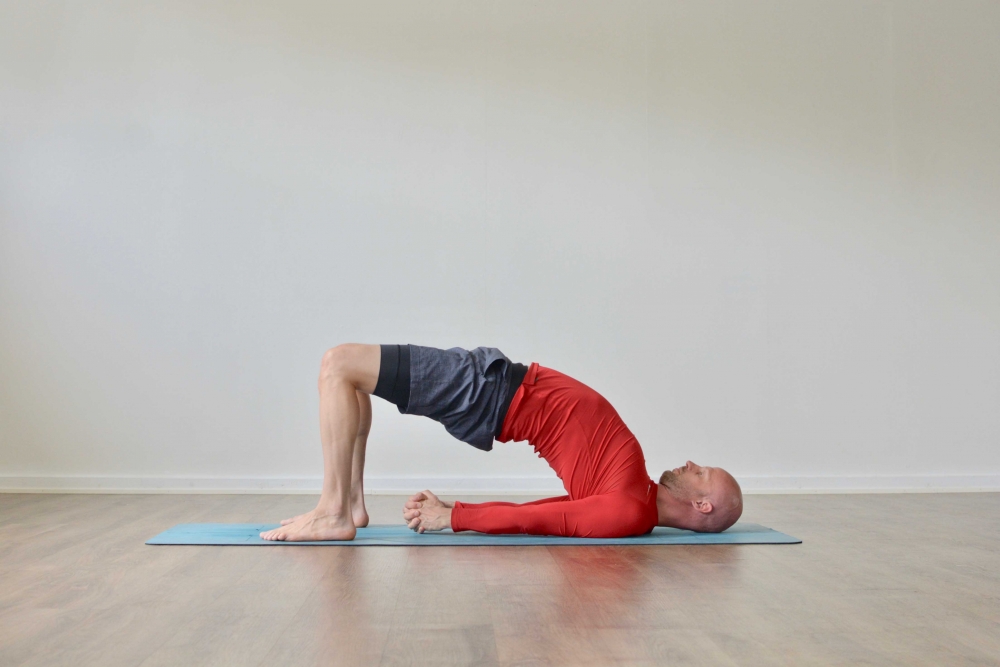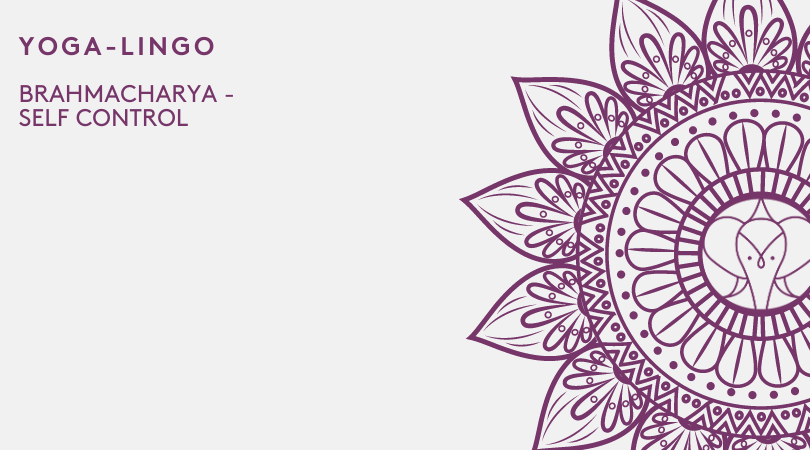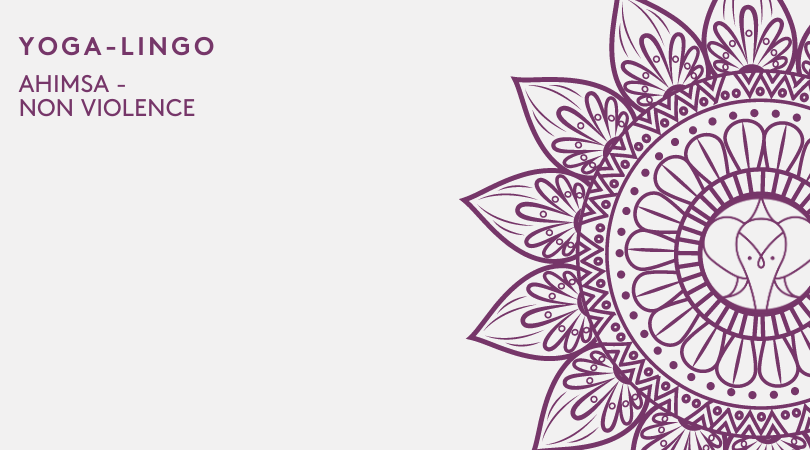Glutes and Yoga
Glutes Anatomy
The glutes are located behind the pelvic girdle and consist of three muscle layers: the gluteus medius, the gluteus maximus, and the gluteus minimus.
Gluteus Medius
The gluteus medius is responsible for abduction (moving the leg away from the body's midline), external rotation, and stabilizing the pelvis during gait (walking or running).
Abduction refers to a limb's movement away from the body's midline. In the case of the hip joint, abduction involves moving the leg outward to the side. This movement is vital for activities such as walking and climbing stairs.External rotation refers to a limb's rotation away from the body's midline. In the case of the hip joint, external rotation involves rotating the leg outward. This movement is essential for standing on one leg and rotating the leg outward to the side.
The gluteus medius is a medium-sized, fan-shaped muscle that originates from the outer surface of the ilium (the upper part of the pelvis) and inserts on the greater trochanter of the femur (bony prominence on the upper thigh bone). It is innervated (supplied with nerves) by the superior gluteal nerve.
In addition to its role in hip joint movement, the gluteus medius is essential in stabilizing the pelvis during gait. (as on one-leg balancing postures, l.e. Tree Pose)
Gluteus Maximus
The gluteus maximus is the largest and most powerful muscle in the gluteal region (buttocks). It is responsible for the extension of the hip joint and lateral and medial thigh rotation.Hip joint extension refers to straightening the leg at the hip, such as when pushing off the ground to walk or run. Lateral rotation refers to rotating the leg outward, while medial rotation refers to rotating the leg inward. These rotational movements are essential for standing on one leg and changing position.
The gluteus maximus is a large, triangular-shaped muscle that originates from the posterior (rear) surface of the ilium (the upper part of the pelvis) and the sacrum (a bone in the lower back) and inserts on the posterior surface of the femur (the thigh bone). It is innervated (supplied with nerves) by the inferior gluteal nerve.
In addition to its role in hip joint movement, the gluteus maximus also helps to stabilize the pelvis and lower back during standing and walking. It works with the other muscles in the gluteal region, such as the gluteus medius and gluteus minimus, to control the hip and leg movements.
Gluteus Minimus
The gluteus minimus is responsible for abduction and external rotation of the hip joint. Abduction refers to a limb's movement away from the body's midline. In the case of the hip joint, abduction involves moving the leg outward to the side. This movement is essential for activities such as walking and climbing stairs.
External rotation refers to a limb's rotation away from the body's midline. In the case of the hip joint, external rotation involves rotating the leg outward. This movement is essential for activities such as standing on one leg and rotating the leg outward to the side.
The gluteus minimus is a small, triangular-shaped muscle that originates from the outer surface of the ilium (the upper part of the pelvis) and inserts on the greater trochanter of the femur (bony prominence on the upper thigh bone). It is innervated (supplied with nerves) by the inferior gluteal nerve.
In addition to its role in hip joint movement, the gluteus minimus also helps to stabilize the pelvis during gait (walking or running). It works with the other muscles in the gluteal region, such as the gluteus medius and gluteus maximus, to control the hip and leg movements.
Deep Six
Below the primary gluteal muscles are six deeper-lying tissues, the external rotators, namely:
- The obturator internus
- The quadratus femoris
- The gemellus inferior
- The obturator externus
- The gemellus superior, and
- The piriformis.
All of these muscles rotate the femur externally in the hip joint.
Yoga for Lower Back and Glutes
Yoga postures and movements would look completely different if it weren't for the glutes. This is because the three gluteal layers of muscle and six deeper-lying muscles are the primary support providers to the pelvis and hips.
Also, the glutes rotate the femur internally and externally and support the thighbone inside the hip socket, preventing it from dislocating. The glutes also allow you to pull your leg to your back. The glutes are essential not only in a yoga practice but also in everyday life. These muscles will enable you to walk, run, stand, and support your body when sitting.
The typical modern lifestyle can have a detrimental effect on the health of your glutes, especially if your lifestyle is characterized by sitting for hours in front of a computer, driving to work instead of walking, and a lack of exercise. This lifestyle often results in a condition called “gluteal amnesia.”
Gluteal amnesia is associated with overstressed, overused, and underdeveloped glutes. Gluteal health can also be affected by strain. High-intensity yoga postures and overworking the glutes during other physical activities can be just as detrimental to your glutes as a passive lifestyle.
Common symptoms of over- and under-developed glutes are that they are susceptible to a limited range of motion, strength imbalances, instability, and pain when carrying out a yoga posture.
A unique issue with gluteal muscles is that they carry weight when you’re in a seated position and when the muscles are relaxed. When a relaxed muscle carries weight, the result is that fascial tissues lengthen and the muscles’ natural tension weakens.
Another consequence of weak glutes is muscle imbalances. The quadriceps and hip flexors must take more strain to do the glutes’ work. Muscle imbalances can inhibit your yoga practice development and can even result in pain.
Yoga to Strengthen Your Glutes
Several yoga poses can strengthen your glutes and enhance their flexibility. Incorporating these poses in your yoga practice will improve your gluteal health and take the load off your hip flexors and quadriceps. The yoga postures for the glutes are listed below.
Warrior Pose III

For this pose to work effectively, you have to engage all your lateral gluteal muscles; the glute medius: is the primary muscle layer providing support to the hips together with the deep six muscles that stabilize each side of the pelvis for each position of the hips.
The Warrior III is, in essence, a balancing posture and is excellent for strengthening your muscles. Start with the runner’s lunge with your right leg forward and your left leg to the back. Your hands should be on the ground, your left leg extended entirely, and your heel in the air.
While keeping your front knee bent, bring your left knee toward your body without losing the stretch. Roll up with your upper body while keeping your back leg straight and your navel tucked in. Step halfway in with your hind leg.
While exhaling, press your right thighbone back and straighten your right leg so you can enter Warrior III. Repeat this process up to eight times.
Bridge Pose

Lie on your back with your arms next to you on the floor. Your arms should be passive so that they don’t help your glutes. Then, place your feet level with each other and about five inches from your buttocks. Activate your core to support your spine throughout the posture.
Tuck your tailbone in slightly, and you will immediately feel your glutes engage. Press your feet on the floor and lift the hips. Your body should create a diagonal line from your shoulder to your knees. First, lift your left foot one inch off the ground and keep it there for up to eight breaths. Then, do the same for your right foot.
Chair Pose

For the most part, the chair pose increases the strength of the gluteus maximus and the medius. To do this pose, start by assuming the mountain pose. Your feet should be hip-width apart, and your toes must point forward. Engage your core muscles to keep your spine intact, and contract your glutes by squeezing your buttocks.
Then, engage your outer hips as if you want to separate the floor between your feet. Next, raise your arms over your head and lower your upper body as if doing a squat or sitting down in a chair. When you go lower, your spine should remain static. Stay in this position for at least eight breaths.
Raise yourself out of this pose and transition back into the original pose. The primary objective of this posture is to build glute strength and endurance. (Siber, 2015)
Works Cited
Siber, K. (2015, May 24). Glute Anatomy to Improve Your Yoga Practice. Retrieved from www.yogajournal.com: https://www.yogajournal.com/li...









